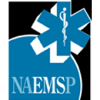Editor’s Note: This article originally appeared in the EMS MEd Blog of the National Association of EMS Physicians and is reprinted here with permission.
The EMS1 Academy features the “Module 2: Workforce Safety & Wellness” course, a 1.5-hour accredited course for emergency services personnel. Visit The EMS1 Academy to learn more.
By Andra Farces, MD
Is fatigue an expected work hazard for EMS providers? Based on experience from interacting with paramedics who make runs to the emergency department, it seems as if sleep on shift remains an uncommon occurrence.
Many prehospital providers report getting little to no sleep in a 24-hour shift due to the high volume of calls in a busy urban EMS system and feel the consequences toward the end of the shift. Anecdotally, however, it seems as if they unanimously love the 24-hour shift structure and would only change the volume of runs they make in a shift. While subjective accounts are informative, we examined the literature to try to answer an important question: how does the lack of sleep and fatigue of a long shift affect EMS workers?
One of the most critical areas in which fatigue affects EMS workers is medical errors. One study found that fatigued EMS workers had 2.2 times greater odds of medical errors or adverse events compared to their non-fatigued colleagues, where fatigue was determined by self-reported surveys [1]. This study also found that the number of shifts worked monthly was positively correlated to medical errors.
Although performance is a difficult marker to measure in these types of studies, one surrogate marker has been psychomotor vigilance testing (PVT), which is a measure of behavioral alertness. One multisite cohort study performed PVT on EMS workers at the beginning and end of a shift and compared it by shift duration (24-hour shifts with shifts greater than 24 hours), as well as by time of shift [2]. They found no difference in PVT performance by shift duration but did find that performance was worse on night shift compared to day shift.
They also found that performance increased as time from a nap to the test increased. For example, if prehospital personnel had napped in the hour before the test, they were more likely to do worse than if they had napped 3 hours before the test. The authors hypothesized this is likely due to sleep inertia, or grogginess upon waking.
Another equally important topic to consider is EMS worker safety. Fatigued EMS workers have a 1.9 greater odds of injury and 3.6 greater odds of safety-compromising behavior compared to their non-fatigued colleagues, but the number of shifts worked per month and longer shift hours (24 vs <12hrs) are not associated with higher odds of negative safety outcomes [1]. A longitudinal cohort study found that obese firefighters who didn’t get enough sleep on shift were twice as likely to report having had an on-duty injury in the past 6-12 months than those who felt like they received enough sleep [3]. Interestingly, this was not significant in normal weight or even overweight firefighters.
Alongside worker safety, another area of importance that is often overlooked is EMS worker wellbeing. Occupational fatigue exhaustion recovery was found to be better for EMS workers who reported greater satisfaction with their schedule [4]. Interestingly, recovery was reported to be worst for EMS workers on 12-hour shifts and better for those who worked longer than 12-hour shifts, which the authors hypothesize could be related to a longer turnaround time between shifts for EMS workers who work longer hours.
EMS worker wellbeing should matter to everyone, since these workers are critical to the functioning of our health system. One study found burnout prevalence among U.S. EMS workers was as high as 38% and that the presence of burnout is associated with a 2-3 fold increase in likelihood to leave a job or leave the EMS profession [5].
The literature summarized above quantifies for us what we already qualitatively knew is a growing problem. While intervention trials and high-quality studies to examine improvements to this issue are sparse, there are potential areas of improvement to be noted in the literature.
Evidence-based guidelines suggest five items that can be used for fatigue risk management in EMS workers [6]:
- Decreasing shifts to less than 24 hours in length
- Monitoring and measuring fatigue
- Providing education and training about fatigue
- Encouraging napping
- Providing access to caffeine
The shift length question is certainly a highly contested one. Do 24-hour shifts need to be phased out? The existing evidence seems to point towards yes, but what is the ideal shift length? A systematic literature review found that shifts less than 24 hours in length are more favorable in terms of patient and personnel safety, although found that there was no difference the same outcome when considering 8-hour shifts versus 12-hour shifts [7]. An observational study found the risk of occupational injury and illness was lower in shifts 8 hours or less compared to longer shifts; shifts that were 16-24 hours in length had 60% greater risk of injury compared to shifts 8-2 hours in length [8].
While it may seem counterintuitive that more training about fatigue would help with fatigue management instead of adding to the workload of an already tired EMS worker population, there is data to back it up. One randomized control trial tested the utility of fatigue interventions at end of shift and 120 days post shift [9]. Interventions were all done via text message and included recommendations in response to EMS workers self-rating their level of fatigue and quality of sleep. Recommendations were things like behavioral modifications to mitigate fatigue and weekly texts to encourage sleep.
While the intervention group had no difference at 120 days from the control, they did have lower fatigue at the end of shift, indicating potential use in short-term fatigue management. Another study demonstrated that fatigue training in EMS workers was associated with improved patient and personal safety, lower ratings of acute fatigue, reduced stress and burnout, and improved sleep quality [10]. This training consisted of basic information on sleep, circadian rhythms, and sleep disorders, as well as the use of caffeine or nap strategies, optimization of sleep schedules or sleep environment, and practicing increased mindfulness.
Another fairly manageable solution to improve on shift fatigue is structured napping. While napping may not drastically change reaction time, it is associated with decreased sleepiness at the end of shift [11]. Even though performance can be decreased soon after waking up from a nap, the evidence for the benefits of napping outweighs any detriments sleep inertia may cause [2].
While napping may not be feasible for many busy EMS units, caffeine has been explored as a potential substitute. One literature review found that in non-EMS shift workers, caffeine improved reaction time and PVT at the end of shift but with the caveat of, as expected, reducing sleep quality and duration [12].
Shift fatigue continues to be a challenge for EMS shift workers but one potential solution may be sleep banking [13]. This strategy involves extending sleep prior to scheduled shifts and may improve performance and acute fatigue.
Take-home message on EMS fatigue management
The perceived benefits of shift work in emergency services have ensured it as a staffing model for decades to come in EMS and emergency medicine. The drawbacks, however, are prevalent and still not fully understood. Ensuring well-rested and capable EMS workers will continue to be a challenge as long as shift work is preferred.
More research is certainly needed and future robust studies looking at important topics such as shift length and on-shift interventions are essential.
In the meantime, the literature suggests that while fatigue and sleepiness are real issues in EMS workers, some things that may help are education and training about fatigue, providing access to caffeine, and encouraging on-shift napping if possible. While the shift length question remains contested, this is an informed discussion that needs to take place with EMS workers at the local level with the available understanding of the benefits and consequences of current staffing patterns.
MORE | Guide to a good night’s sleep
ABOUT THE AUTHORS
Andra Farces, MD, was born and raised in Romania, grew up in Arizona, and went to medical school at Baylor College of Medicine in Houston. She is currently a third-year emergency medicine resident at Northwestern in Chicago. Her interests include prehospital medicine, international medicine and the intersection of the two.
Hashim Zaidi, MD, is an EMS Fellow at the University of Chicago for the Chicago EMS System. His unprofessional interests include prehospital care, disaster management/mass casualty incidents, tactical medicine, curriculum development, and end-of-life care issues. He is an advocate for improved prehospital education, research, and physician involvement.
REFERENCES
- Patterson, P.D., Weaver, M.D., Frank, R.C., Warner, C.W., Martin-Gill, C., Guyette, F.X., … Hostler, D. (2012). Association between poor sleep, fatigue, and safety outcomes in emergency medical services providers. Prehospital Emergency Care, 16(1), 86-97.
- Patterson, P.D., Weaver, M.D., Markosyan, M.A., Moore, C.G., Guyette, F.X., Doman, J.M. … Buysse, D.J. (2019). Impact of shift duration on alertness among air-medical emergency care clinician shift workers. American Journal of Internal Medicine, 62, 325-336.
- Kaipust, C.M., Jahnke, S.A., Poston, S.C.W., Jitnarin, N., Haddock, C.K., Delclos, G.L., & Day, R.S. (2019). Sleep, Obesity, and Injury Among US Male Career Firefighters. Journal of Occupational and Environmental Medicine, 61(4), e150-e154.
- Patterson, P.D., Buysse, D.J., Weaver, M.D., Callaway, C.W., & Yealy. D.M. (2015). Recovery between Work Shifts among Emergency Medical Service Clinicians. Prehospital Emergency Care, 19(3), 365-375.
- Crowe, R.P., Bower, J.K., Cash, R.E., Panchal, A.R., Rodriguez, S.A., Olivo-Marston, S.E. (2018). Association of Burnout with Workforce-Reducing Factors among EMS Professionals. Prehospital Emergency Care, 22(2), 229-236.
- Patterson, P.D., Higgins, J.S., Van Dongen, H.P.A., Buysse, D.J., Thackery, R.W., Kupas, D.F., … Martin-Gill, C. (2018). Evidence-Based Guidelines for Fatigue Risk Management in Emergency Medical Services. Prehospital Emergency Care, 15(22), 89-101.
- Patterson, P.D., Runyon, M.S., Higgins, J.S., Weaver, M.D., Teasley, E.M., Kroemer, A.J., … Martin-Gill, C. (2018). Shorter Versus Longer Shift Durations to Mitigate Fatigue and Fatigue-Related Risks in Emergency Medical Services Personnel and Related Shift Workers: A Systematic Review. Prehospital Emergency Care, 15(22), 28-36.
- Weaver, M.D., Patterson, P.D., Fabio, A., Moore, C.G., Freiberg, M.S., & Songer, T.J. (2015). An observational study of shift length, crew familiarity, and occupational injury and illness in emergency medical service workers. Occupational and Environmental Medicine, 72(11), 798-804.
- Patterson, P.D., Moore, C.G., Guyette, F.X., Doman, J.M., Weaver, M.D., Sequiera, D.J., … Buysse, D.J. (2019). Real-Time Fatigue Mitigation with Air-Medical Personnel: The SleepTrackTXT2 Randomized Trial. Prehospital Emergency Care, 23(4), 465-478.
- Barger, L.K., Runyon, M.S., Renn, M.L., Moore, C.G., Weiss, P.M., Condle, J.P., … Patterson, P.D. (2018). Effect of Fatigue Training on Safety, Fatigue, and Sleep in Emergency Medical Services Personnel and Other Shift Workers: A Systematic Review and Meta-Analysis. Prehospital Emergency Care, 15(22), 58-68.
- Martin-Gill, C., Barger, L.K., Moore, C.G., Higgins, S., Teasley, E.M., Weiss, P.M., … Patterson, P.D. (2018). Effects of Napping During Shift Work on Sleepiness and Performance in Emergency Medical Services Personnel and Similar Shift Workers: A Systematic Review and Meta-Analysis. Prehospital Emergency Care, 22, 47-57.
- Temple, J.L., Hostler, D., Martin-Gill, C., Moore, C.G., Weiss, P.M., Sequiera, D.J., … Patterson, P.D. (2018). Systematic Review and Meta-analysis of the Effects of Caffeine in Fatigued Shift Workers: Implications for Emergency Medical Services Personnel. Prehospital Emergency Care, 22, 37-46.
- Patterson, P.D., Ghen, J.D., Antoon, S.F., Martin-Gill, C., Guyette, F.X., Weiss, P.M., … Buysee, D.J. (2019). Does evidence support “banking/extending sleep” by shift workers to mitigate fatigue, and/or to improve health, safety, or performance? A systematic review. Sleep Health, 5(4), 359-369.













